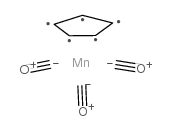Carbonylmetalloimmunoassay (CMIA) a new type of non-radioisotopic immunoassay. Principles and application to phenobarbital assay.
M Salmain, A Vessières, P Brossier, I S Butler, G Jaouen
Index: J. Immunol. Methods 148(1-2) , 65-75, (1992)
Full Text: HTML
Abstract
A new non-radioisotopic immunoassay procedure, which we have termed carbonylmetalloimmunoassay (CMIA), is described. The tracers used in this approach are organometallic carbonyl complexes that can be detected at femtomole levels (300-700 fmol) by Fourier transform infrared (FT-IR) spectroscopy. The validity of the technique has been tested in a phenobarbital assay using as the marker a cyclopentadienylmanganese (I) tricarbonyl (cymantrene) moiety, ethyl acetate extraction to separate the free and bound organometallic fractions, and FT-IR spectroscopy to detect the CO stretching modes of the organometallic label. Typical dilution and standard curves obtained with this CMIA procedure are presented. The method was of comparable sensitivity to a [14C] radioimmunoassay (RIA) for the detection of phenobarbital. A comparison of the results for phenobarbital assays by both CMIA and RIA showed that higher titres were obtained using the CMIA method. The standard curves suggest that CMIA is a reliable and reproducible immunoassay procedure for phenobarbital.
Related Compounds
| Structure | Name/CAS No. | Molecular Formula | Articles |
|---|---|---|---|
 |
Cyclopentadienylmanganese Tricarbonyl
CAS:12079-65-1 |
C8H5MnO3 |
|
Synthesis, characterization, X-ray crystallography, and cyto...
2008-12-01 [J. Inorg. Biochem. 102(12) , 2114-9, (2008)] |
|
Potentiality of an organometallic labelled streptavidin--bio...
1991-01-01 [J. Pharm. Biomed. Anal. 9(10-12) , 965-7, (1991)] |
|
Pulmonary activation and toxicity of cyclopentadienyl mangan...
1996-02-01 [Toxicol. Appl. Pharmacol. 136(2) , 280-8, (1996)] |
|
Experimental and molecular dynamics simulation study of the ...
2008-10-16 [J. Phys. Chem. A 112(41) , 10429-34, (2008)] |
|
Occupational and environmental exposure of garage workers an...
1994-01-01 [Am. Ind. Hyg. Assoc. J. 55(1) , 53-8, (1994)] |